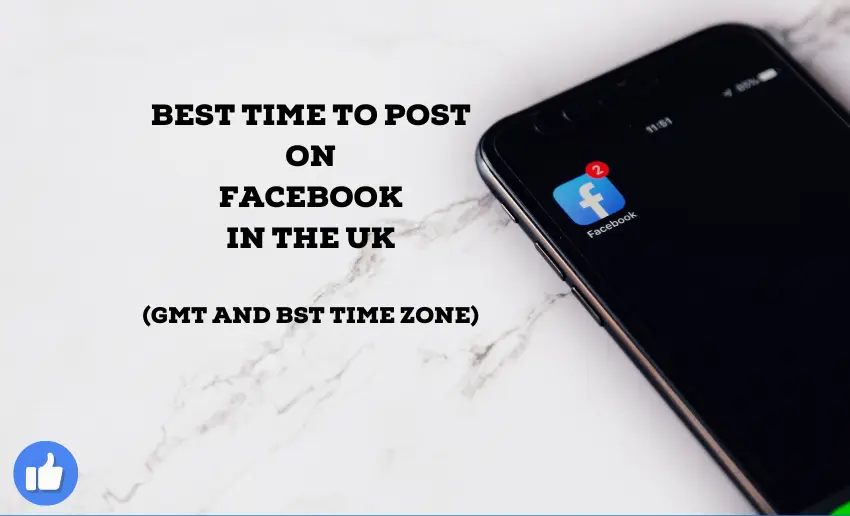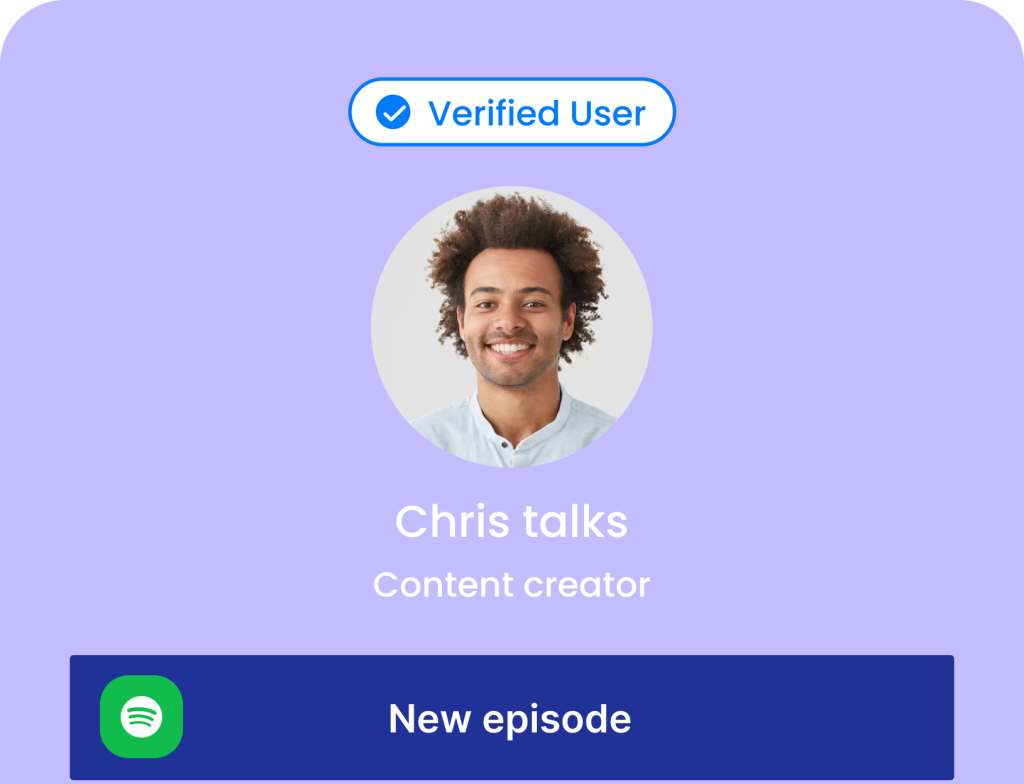Social media platforms like Facebook have become essential tools for businesses , influencers, and organizations to connect with their target audiences. However, with the vast amount of content shared daily, it’s crucial to strategize not only what to post but also when to post it for maximum impact.
For Facebook users in the United Kingdom (UK), timing plays a significant role in determining the visibility and engagement levels of their posts. Therefore, what is the best time to post on Facebook in the UK?
Having a deep understanding of when UK audiences are most active and receptive can make a substantial difference in reaching and resonating with them effectively. This piece sets the stage for exploring the best time to post on Facebook UK.
The best time to post on Facebook in United Kingdom
There are distinct patterns in user behavior and preferences within the UK Facebook community. Understanding these trends can help businesses and individuals optimize their posting schedules for maximum visibility and interaction.
The peak engagement times for each day of the week allow creators to tailor their Facebook posting schedules to align with the habits and preferences of the UK audience, maximizing the impact of their content.
Here are the best times to post on Facebook UK for each day of the week:
Monday
Peak engagement: Mid-morning (9:00 AM – 11:00 AM GMT or 10:00 AM – 12:00 AM BST) and early evening (6:00 PM – 9:00 PM GMT or 7:00 PM – 10:00 PM BST)
Users are often catching up on news and updates after the weekend, making mid-morning an ideal time for informative or entertaining content. Early evening sees increased activity as people unwind after work or school.
Tuesday
Peak engagement: Late morning (10:00 AM – 12:00 PM GMT or 11:00 AM – 1:00 PM BST) and early afternoon (1:00 PM – 3:00 PM GMT or 2:00 PM – 4:00 PM BST)
Tuesdays tend to be productive days, with users engaging during breaks or lunchtime. Content posted during these hours has a higher chance of grabbing attention amid daily tasks.
Wednesday
Peak engagement: Mid-morning (9:00 AM – 11:00 AM GMT or 10:00 AM – 12:00 PM BST) and late afternoon (4:00 PM – 6:00 PM GMT or 5:00 PM – 7:00 PM BST)
By midweek, users are seeking a mix of informative and uplifting content. Mid-morning and late afternoon windows offer opportunities to capture their interest during breaks or downtime.
Thursday
Peak engagement: Late morning (10:00 AM – 12:00 PM GMT or 11:00 AM – 1:00 PM BST) and early evening (5:00 PM – 7:00 PM GMT or 6:00 PM – 8:00 PM BST)
As anticipation for the weekend builds, users are actively engaging with content during work breaks and leisure time in the evening, making these periods ideal for posting.
Friday
Peak engagement: Mid-morning (9:00 AM – 11:00 AM GMT or 10:00 AM – 12:00 PM BST) and early afternoon (12:00 PM – 2:00 PM GMT or 1:00 PM – 2:00 PM BST)
Fridays typically see heightened activity as users prepare for the weekend. Mid-morning and early afternoon slots provide optimal opportunities to reach audiences before they transition into weekend mode.
Saturday
Peak engagement: Morning (9:00 AM – 11:00 AM GMT or 10:00 AM – 11:00 AM BST) and early evening (5:00 PM – 7:00 PM GMT or 6:00 PM – 8:00 PM BST)
Saturdays offer a blend of relaxation and activity, with users engaging with content during leisurely mornings and early evening socializing.
Sunday
Peak engagement: Late morning (10:00 AM – 12:00 PM GMT or 11:00 AM – 12:00 PM BST) and early evening (5:00 PM – 6:00 PM BST)
Sundays are often dedicated to relaxation and family time, with users checking in on social media during late mornings and early evenings while winding down the weekend.
What day and time is Facebook most active in the UK?
Generally speaking, weekdays tend to see higher activity compared to weekends, with peak times occurring during breaks, lunch hours, and after-work hours. Mid-morning (around 10:00 AM) and early evening (between 6:00 PM and 9:00 PM) are often cited as peak periods for engagement on Facebook in the UK.
These times coincide with users’ daily routines when they are more likely to check and interact with social media content. Nevertheless, it’s essential to analyze audience insights and experiment with posting times to identify the optimal schedule for engaging with your specific target audience on Facebook in the UK.
How to find the best time to post on Facebook in the UK?
Finding the best time to post on Facebook in the UK involves a combination of data analysis, experimentation, and understanding your audience.
Regardless, here is a quick step-by-step guide to help you out:
1. Analyze audience insights
Start by using tools like Facebook Insights to understand your audience demographics. Look for patterns in their online activity, such as when they’re most active and engaged. This data will help you identify the best times to reach and connect with your target audience on social media.
2. Research industry trends
Research trends and benchmarks within your industry to see when engagement is typically high. Look at when competitors or similar businesses are posting and experiencing success. Understanding these industry-specific patterns can guide your posting schedule for better results.
3. Analyze competitors
Keep an eye on your competitors’ social media activity. Analyze their posting schedules and engagement levels to gain insights into effective strategies. This competitive analysis can inform your approach to finding the best times to post on social media in the UK.
4. Experiment with posting times
Try posting content at different times of the day and week to see when your audience responds best. Monitor the performance of each post, paying attention to engagement metrics like likes, comments, and shares. Experimentation will help you find the optimal posting times for your specific audience.
5. Utilize scheduling tools
Use scheduling tools like Buffer or Hootsuite to plan and automate your social media posts. These tools allow you to schedule content in advance, ensuring consistency in your posting schedule even during busy periods. Scheduling tools also make it easier to experiment with posting times and track performance.
6. Factor in Time Zones
In the United Kingdom, the time zone changes throughout the year due to Daylight Saving Time (DST). When DST is in effect from March to October, the UK observes British Summer Time (BST) instead of Greenwich Mean Time (GMT).
This means that the clocks are moved forward by one hour during BST, making evenings brighter but mornings darker. BST starts at 01:00 GMT on the last Sunday of March and ends at 01:00 GMT (02:00 BST) on the last Sunday of October.
In 2023, the UK switched to BST on March 26 and returned to GMT on October 29. For 2024 and 2025, BST will start on March 31 and end on October 27 and March 30, and end on October 26, respectively.
7. Engage your audience
Encourage interaction and feedback from your audience regarding the timing of your posts. Ask questions, run polls, or conduct surveys to gather insights into when your audience prefers to engage with content on social media. Engaging with your audience builds rapport and helps tailor your posting schedule to their preferences.
8. Monitor and adapt
Continuously monitor the performance of your social media posts and adapt your posting schedule accordingly. Pay attention to changes in audience behavior and engagement patterns over time. By staying flexible and responsive, you can optimize your social media strategy for maximum effectiveness in the UK market.
Is posting every day on Facebook in UK good?
Posting daily can establish a consistent presence on the platform, which can help build trust and loyalty among your audience. Regular posting can keep your brand visible in users’ news feeds, increasing the chances of engagement and interaction with your content.
Posting every day on Facebook can be beneficial if done strategically and if the content remains relevant and engaging to your audience. However, be mindful not to overwhelm your audience with excessive posts. Quality should always take precedence over quantity. If you’re struggling to maintain quality while posting daily, consider scaling back your frequency.
Factors influencing optimal Facebook posting times if you are in the UK
It’s easy to assume you can post on Facebook UK and get the same level of engagement. However, several factors affect how people use social media and at what times they do.
1. Work hours
Work hours heavily influence when people are active on Facebook. Typically, users engage more during breaks, lunchtime, and after work. For instance, mid-morning and early evening see spikes in activity as people take breaks or unwind after work. Posting during these times can increase the likelihood of reaching users when they’re most receptive to content.
2. Commute times
During commute times, users often turn to their smartphones for entertainment or to catch up on social media. Morning and evening commute periods witness increased Facebook activity as people browse while traveling. Posting content during these times can capture the attention of commuters seeking engaging content to pass the time.
3. Leisure periods
Leisure periods, such as weekends or evenings, are prime times for Facebook engagement. Users have more free time to browse and interact with content during these periods. Posting during leisure times, like Saturday mornings or Sunday evenings, can lead to higher engagement rates as users are more relaxed and open to consuming and engaging with content.
4. Personal Facebook goals
Individual users may have specific goals for their Facebook usage, such as networking, entertainment, or staying informed. Understanding the personal motivations of your audience can help determine optimal posting times. For example, professionals may be more active during weekdays, while students may engage more during evenings and weekends.
5. Frequency Of posting
Posting frequency impacts how often your content appears in users‘ feeds. Finding the right balance between posting too frequently and not enough is crucial. Overposting can overwhelm followers, leading to decreased engagement, while infrequent posting may cause your content to be overlooked. Monitoring audience response and adjusting posting frequency accordingly is key.
6. Industry or niche
Different industries or niches may have varying peak engagement times based on the behavior and preferences of their target audience. For example, B2B audiences may be more active during weekdays and business hours, while lifestyle or entertainment-focused audiences may engage more during evenings and weekends. Understanding your industry’s dynamics can help tailor your posting schedule accordingly.
7. Audience demographics
Demographic factors such as age, location, and interests influence when users are most active on Facebook. For instance, younger audiences may be more active during evenings, while older demographics might engage more during daytime hours. Analyzing audience demographics can provide insights into optimal posting times for reaching specific segments of your audience effectively.
8. Facebook algorithm
The Facebook algorithm determines the visibility of your posts in users’ news feeds based on various factors like relevance, engagement, and timeliness. Understanding how the algorithm works can help optimize your posting times. Posting when your audience is most active increases the likelihood of engagement, which signals to the algorithm that your content is relevant and deserving of higher visibility.
In the End
Posting on Facebook at the right time is crucial for engaging UK audiences effectively. Understanding peak engagement times and aligning your posting schedule accordingly can significantly impact the visibility and success of your content. It’s important to remain adaptable and responsive to changes in user behavior and platform algorithms.








